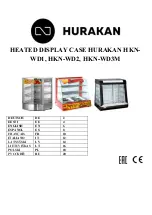
82002-PG-F
ST3400 TAWS/RMI PILOT’S GUIDE
PAGE 16
and runway numbers are depicted on-screen. The presence of an airport
and/or runway on the display can be used to verify that the airport is
contained in the ST3400 database.
Cold Weather Operation
Colder than standard air temperature can cause barometric altimeters to
indicate a higher altitude than actual. For installations using corrected
barometric altitude (altitude from the altimeter) the ST3400 must be
connected to an outside air temperature (OAT) probe to correct the
barometric altimeter reading to ensure correct terrain alerts. In installations
that use an air data computer to provide altitude information, the ST3400
will add a correction factor to the supplied altitude when the outside air
temperature is greater than 20
q
C below standard temperature. The
message “OAT BELOW STANDARD” will be displayed on the ST3400
when correction factors are being applied. Please refer to the AIM for
more information on altimeter errors caused by cold weather.
Traffic and TCAS
The ST3400 can display nearby transponder equipped aircraft when
interfaced with compatible TAS or TCAS processors. Standard TCAS
symbology is used to display the relative location and altitude of traffic.
The traffic information can be displayed overlaid on terrain or a dedicated
TFC display mode (without terrain) can be viewed. As a display, the
ST3400 will operate in accordance with the Pilots Operating Handbook of
the installed Traffic Processor as a primary traffic display.
82002-PG-F
ST3400 TAWS/RMI PILOT’S GUIDE
PAGE 17
CHAPTER 3. TAWS FUNCTIONAL REQUIREMENTS
The ST3400 can be configured either as a Class A TAWS system or as a
Class B TAWS system. An aircraft with radar altimeter may be certified
as Class A or as Class B.
Note: It may be easier and less expensive, given the same equipment, to
certify an aircraft for Class B. The aircraft may be later promoted to Class
A with additional inspections and paperwork and ST3400 upgrade.
CLASS A TAWS FUNCTIONAL REQUIREMENTS
Mode Function
FLTA
Forward Looking Terrain Avoidance
PDA Premature
Descent
Alert
GPWS Mode 1
Excessive Rate of Descent
GPWS Mode 2
Excessive Closure Rate to Terrain
GPWS Mode 3
Altitude Loss After Takeoff or missed approach
GPWS Mode 4
Flight Into Terrain Not in Landing Configuration
GPWS Mode 5
Excessive Downward Deviation from Glide Slope
GPWS Mode 6
Voice callout “Five Hundred” when the aircraft descends
through 500 feet radar altitude
Class A TAWS requires a display, which shows the aircraft in relation to the
terrain. Satisfied by the ST3400 dedicated display.
Class A TAWS requires a radar altimeter and barometric vertical speed and
pressure altitude for GPWS functions.












































